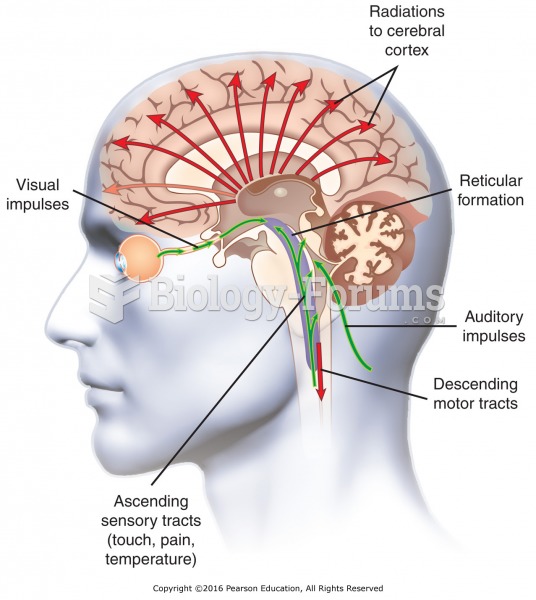|
|
|
Astigmatism is the most common vision problem. It may accompany nearsightedness or farsightedness. It is usually caused by an irregularly shaped cornea, but sometimes it is the result of an irregularly shaped lens. Either type can be corrected by eyeglasses, contact lenses, or refractive surgery.
Adults are resistant to the bacterium that causes Botulism. These bacteria thrive in honey – therefore, honey should never be given to infants since their immune systems are not yet resistant.
When blood is exposed to air, it clots. Heparin allows the blood to come in direct contact with air without clotting.
If all the neurons in the human body were lined up, they would stretch more than 600 miles.
Thyroid conditions may make getting pregnant impossible.






